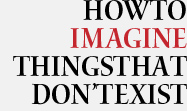CALENDAR
31st Bienal de São Paulo
From 6 Sep through 7 Dec, 2014
Media Preview: 1 Sep
Professional Preview: 2 - 5 Sep
Educative Preview: 4 - 5 Sep
Exhibition Opening: 6 Sep
For Press Credentials, click here

The 31st Bienal de São Paulo, is currently being developed by Charles Esche, Galit Eilat, Nuria Enguita Mayo, Pablo Lafuente and Oren Sagiv in cooperation with an extended team that includes the permanent staff of the Bienal.
The curatorial team started working in August 2013 and is concentrating over the next months on the research, selection, production and arrangement of the Bienal at the pavilion in Ibirapuera Park. There is currently no fixed theme or organising device for the Bienal. Instead of predetermining the nature or meaning of artistic practice, the curators have drawn up some provisional interests and will rely on research, exchanges and conversations in the months to come in order to shape the event. This process, which is intended to be accessible throughout, is grounded on a series of open meetings across Brazil and elsewhere, the workshop on cultural organisation announced here, and intense travels in Brazil and Latin America.
The wide social, political and economic field seems to be in an unusual, precarious state today. A strange kind of balance holds sway in which it is hard to believe that things will remain the same, but just as difficult to imagine how and to what extent they might change. The uncertainty of the prognosis has many effects on the cultural field, from protest to resignation, from complicity to doubt. Out of this comes the curators’ interest in the ‘turn’ as a phenomenon and ‘trans-’ as a notion, both of which suggest a change in state at a ground level, not connected to higher or more generalised goals. These turns are probably irreversible (you cannot put the paint back in the tube), but they happen without a clear direction. They are disorderly perhaps, dishonest or strategic too; they work not through representation and ‘legitimate’ structures, but emerge as urgent responses to specific situations, and result in change that is not progressive or cumulative (i.e. modern). In the face of this situation, inconstancy can be considered a virtue, something that allows tactical withdrawals or punctual interventions.
The curators’ intended intervention in today’s cultural and artistic field will operate through the creation and support of collaborations between individuals and groups questioning conventional definitions of artist, participant, user and spectator. On their research they will look for affective responses to current conditions and will move text, discourse and explanation to the background. Through the format of art, the plan is to reach towards things that do not seem to exist, things that might be experienced but are not articulated; felt but not explained; believed but not proven. These are the things that are often ignored when it comes to the hard logic of competitive efficiency and economic survival.
Finally, every aspect of the 31st Bienal (research, art and discourse production, display) is understood as part of an education process that is problem-posing, exploratory and unresolved. The curators intend to offer the audience a plethora of dynamic experiences connecting the interior public space of the pavilion with its surroundings – the people in the park, the city, the country, the continent, the world – and address these levels with different forms and modes of artistic practice.




